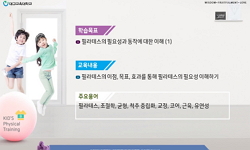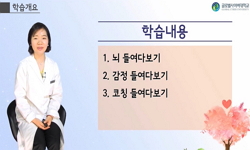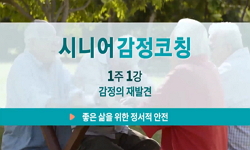본 논문은 <달래나 보지>․<오누이 힘내기>․<여우누이>를 ‘남매관계 설화’로 묶어 설화 속에서 남매관계가 형상화되는 양상을 육체·감정·맥락·무의식이라는 시각에서 새�...
http://chineseinput.net/에서 pinyin(병음)방식으로 중국어를 변환할 수 있습니다.
변환된 중국어를 복사하여 사용하시면 됩니다.
- 中文 을 입력하시려면 zhongwen을 입력하시고 space를누르시면됩니다.
- 北京 을 입력하시려면 beijing을 입력하시고 space를 누르시면 됩니다.
남매관계 설화의 형상화 양상과 의미 연구 = A Study on the Representation and Meaning of the ‘Brother-Sister’ Relationship Tales
한글로보기https://www.riss.kr/link?id=T15828307
- 저자
-
발행사항
서울 : 서울대학교 대학원, 2021
-
학위논문사항
학위논문(박사) -- 서울대학교 대학원 , 국어국문학과 국문학전공 , 2021. 2
-
발행연도
2021
-
작성언어
한국어
- 주제어
-
DDC
810
-
발행국(도시)
서울
-
형태사항
iv, 255 ; 26 cm
-
일반주기명
지도교수: 조현설
-
UCI식별코드
I804:11032-000000165860
- DOI식별코드
- 소장기관
-
0
상세조회 -
0
다운로드
부가정보
국문 초록 (Abstract)
본 논문은 <달래나 보지>․<오누이 힘내기>․<여우누이>를 ‘남매관계 설화’로 묶어 설화 속에서 남매관계가 형상화되는 양상을 육체·감정·맥락·무의식이라는 시각에서 새롭게 논의했다.
육체와 관련하여, <달래>에서는 누이의 육체 일부가 감각의 대상으로 형상화되고 폐쇄적․일방향적으로 인식되면서 은폐된 남매관계가 나타난다. <힘내기>에서는 누이의 육체가 완력을 중심으로 형상화되는데 ‘성쌓기형’에서 누이의 힘은 온전히 인정받지 못하고 굴절되며 ‘옷짓기형’에서 누나의 육체가 갖는 영향력은 대폭 축소된다. <여우>에서는 여우누이의 괴물화된 육체가 집중적으로 형상화되고 오빠들과 여우누이는 극단적으로 이질화되면서 파괴적 관계를 구축한다.
감정 이론에 따라 남매관계 설화를 살피면 <달래>에서는 오빠/남동생의 성욕과 죄책감, 누이의 슬픔이 주목된다. 이야기판에서는 오빠/남동생에 대한 혐오 혹은 음담적 흥미가 드러나지만 ‘연민’의 감정은 찾기 어려웠다. <힘내기>의 경우 ‘성쌓기형’에는 패배한 누이에 대한 제한적 공감과 지배 질서에 대한 두려움이 함께 나타나지만 ‘옷짓기형’의 감정의 밀도는 상대적으로 낮다. <여우>에서는 여우누이로부터 유발되는 공포, 그 공포를 소비하는 과정에서 발생하는 흥미와 파괴적․윤리적 쾌감이 함께 드러난다.
남매관계 설화의 공간적․사회적 맥락을 읽으면 <달래>의 경우 남매의 문제에 공간은 무의미하며 남매 외의 가족·지역·국가 등의 관계가 거의 등장하지 않는바 이는 남매관계의 고립성과 경계성의 지표이다. <힘내기>의 경우 ‘성쌓기형’과 ‘옷짓기형’에서 공히 남매는 대조적 공간을 구축하며, 가부장제․국가 권력 등 지배 질서와의 갈등 속에서 여성과 장사에 대한 배제와 제거를 실현한다. <여우>에서는 남매 갈등의 심화에 따라 공간이 분산되는데 이는 가족의 해체에 대응된다.
남매관계 설화의 형상화에 드러나는 이러한 육체와 감정, 그리고 맥락의 함의는 무엇인가? 먼저 오빠/남동생의 존재가 분열되고 대상화되는 점에 주목해야 한다. <달래>의 경우 오빠/남동생의 자살은 신체의 자기분열, 감정적 자기혐오를 의미하는데 이에 대한 화자와 청중의 희화적 시선도 나타난다. 이러한 파편성은 <힘내기>에서도 유사한데 ‘옷짓기형’의 경우 역사적 인물인 남동생의 영향력이 크게 작용하지만 그런 속성이 없다면 정체성이 취약해지는바 비극적 인물은 후대의 권력 유지, 공동체 결속과 관련하여 선택적으로 대상화되는 측면이 있다.
다음으로 누이의 불확정적 정체성에 주목해야 한다. <달래>에는 누이에 대한 불완전한 성적 대상화가 나타난다. 누이의 탄식은 오빠/남동생의 성욕에 대한 구체적 예측이나 가정을 동반하지 않기에 ‘달래나 보지’라는 탄식은 성욕의 표현이 아니라 욕망의 한정을 의미한다. <힘내기>나 <여우>에는 누이의 ‘혼성성’이 두드러진다. <힘내기>의 누이에게는 ‘유사 모성’, ‘여성 젠더에게 기대되지 않는 힘의 소유자’, ‘일시적으로 수행되는 남성성’ 등 모순적이고 혼종적인 속성이 부여되고, <여우>의 여우누이에게는 인간으로 보려는 시선과 괴물로 보려는 시선이 동시에 투영된다.
남매관계 설화에 함의된 오빠/남동생의 분열성, 누이의 불확정성은 알면서도 모르는 듯 대하는 무의식의 기제인 ‘부인(否認, disavowal)’을 통해 해명할 수 있다. <달래>의 오빠/남동생은 ‘도덕적 나’에 대한 욕망과 누이에 대한 두려움 때문에 자신의 성기에 죄를 집중시킴으로써 성욕을 부인한다. <여우>에는 집안을 망치는 딸은 원치 않지만 동시에 부모의 결핍을 채워주는 ‘여우같은 딸’은 원하기 때문에 괴물 누이를 용인하는 부인이 나타난다. <힘내기>에는 개인뿐만 아니라 가부장제·국가 권력과의 관계에까지 부인이 확장됨으로써 누이의 힘에 대한 이중의 부인이 나타난다. 이는 국가 권력을 무서워하면서도 욕망하고, 누이나 역사인물의 힘을 선망하면서도 두려워하는 전승주체의 부인과 관련이 있다.
남매관계 설화의 전승사적 맥락은 유관 설화인 <홍수와 남매혼>․<해와 달이 된 오누이>와의 비교를 통해 분명해진다. <홍수>는 남매에서 비롯된 인류의 존재를 긍정하기에 남매간 ‘금지’에 대해 무관심한 서사, ‘부인’이 발생하기 전에 남매가 문제를 극복하기에 부인이 부재하는 서사, 즉 ‘탈남매관계화’한 서사이다. <해와달> 역시 남매간의 성욕에 대한 부인이 이미 완료·소멸되었고, 남매간 ‘금지’도 전혀 언급되지 않는 ‘탈남매관계화’한 설화이다. 그 결과 이들 설화는 전승력이 약화되거나 전승주체의 변화가 발생한다. 남매관계는, 남매관계 설화를 현재까지 밀고 온 동력이다.
다국어 초록 (Multilingual Abstract)
This thesis discusses the representation and meaning of the ‘brother-sister’ relationship tales by combining <You would have asked for(달래나 보지 Dallae-na-bo-ji, Dallae for below)>, <Trial of strength between brother and sister(오...
This thesis discusses the representation and meaning of the ‘brother-sister’ relationship tales by combining <You would have asked for(달래나 보지 Dallae-na-bo-ji, Dallae for below)>, <Trial of strength between brother and sister(오누이 힘내기Onui-himnaegi, Himnaegi for below)>, and <Fox sister(여우누이Yeo-u-nui, Fox for below)> tales. The main discussion will be focused on the issue of ‘body’, ‘emotion’, ‘context’, and ‘unconscious’.
In regard of the issue of ‘body’, in Dallae only a limited part of the sister's body is represented as an object of sensualization, and due to the closed, one-way perception regarding the sister, the brother-sister relationship is concealingly constructed. In Himnaegi, the sister's body is represented around her physical strength. In the ‘castle-building type’, the sister's strength is not fully approved and is refracted. The influence of her body in the ‘clothing type’ is greatly reduced. In Fox, the image of the fox sister is focused on revealing a monstrous body, while the heterogeneity among the brothers and the fox sister is maximized, establishing a destructive relationship.
From emotion theories’ perspective, Dallae’s narration focuses on the brother’s sexual desire, his sense of guilt and the sister’s grief. Tellers and audience may reveal both hate/disgust and interest toward the brother, but it is hard to confirm the presence of ‘compassion’. In Himnaegi, the ‘castle-building type’ shows limited empathy toward the defeated sister and a fear for the ruling power. The ‘clothing type’ shows a relatively low density of emotions. Fox represents the horror of the monstrous fox sister while it is also possible for tellers and audience to have destructive and ethical pleasure as the brother's fear is consumed as entertainment.
In terms of spatial and social aspects, the space in Dallae is a space of emptiness, and the family, local communities, and the government seldom appear, which leads to isolation and liminality. In Himnaegi, the brother and sister construct contrasting spaces both in ‘castle-building type’ and ‘clothing type’. The exclusion and removal of women and strength are realized through the conflicts with the patriarchy and state power. In Fox, dispersive spatial changes are responding to that brother-sister conflict and the family’s disorganization.
Based on the above analysis, the meaning of brother and sister will be examined. The brother shows the self-division and objectification. In Dallae, his suicide is a ‘self-division of his body’ as well as self-hatred while tellers and audience may show views of ridicule toward the brother. Himnaegi also shares the fragmentary presence of the brother. Although the younger brother-historical person's influence plays a significant role in the ‘clothing type’, his identity becomes vulnerable without the attributes of historical figures, whose heroism is often associated with the maintenance of power and community solidarity of the present time with selective objectification.
The sister’s identity is constructed with uncertainness. Dallae reveals incomplete sexual objectification of the sister; her sigh does not accompany specific predictions or assumptions about her brother nor about his sexual desire. The sigh, ‘Dallae-na-bo-ji(You would have asked for…)’ would eventually limit the existence of the brother’s sexual desires. In Himnaegi and Fox, the sister’s hybridity appears. In particular, the sister in Himnaegi consequently owns hybrid characteristics ― quasi-motherhood, ‘inappropriate’ strength of the female gender, and temporarily performed masculinity. In Fox, expectations for both humans and monster are projected onto the fox sister.
The self-division of the brother and the ambivalence of the sister can be clarified through the conception of unconscious ‘disavowal’, which originates from the psychoanalytic approach. In Dallae, the brother’s desire for a ‘moral self’ and a fear for his sister drive him to concentrate on the ‘sin of the penis’ disavowing his sexual desire. In Fox, disavowal appears when we call for ‘daughter like a fox’ who is necessary to satisfy the parents’ deficiency, which leads to the continual appearance of monstrous fox sister. In Himnaegi, disavowal extends to the relationship through patriarchal system and state power, resulting in a double disavowal of the sister’s strength. Therefore we can also find out disavowal from transmitters who have ‘fear and desire for state power’ and ‘envy and fear for the strength of the sister and the brother(historical hero)’.
The research expands to related tales such as <The Flood and Brother-Sister Marriage(Flood for below)> and <Brother and Sister who became Sun and Moon(Sun&Moon for below)> to explore the transmission historical context of the ‘brother-sister’ relationship tales. Flood is a relatively indifferent narrative about incest ban, because it affirms the existence of mankind that has prospered from the brother and sister’s marriage. Flood also does not carry disavowal of sexual desire, because the brother and sister overcome the problem and move toward a common goal before the disavowal happens. Therefore, Flood can be concluded as a tale that deviated from the brother-sister relationship. In the currently existing Sun&Moon the disavowal of sexual desire has already been completed and has disappeared in Korea's Sun&Moon, and the incest ban is also not surfaced at all. Therefore, the current Sun&Moon is also a tale that deviated from the brother-sister relationship. As a result, the transmission is drastically weakened or the subject of transmission has changed. Brother-sister relationship itself has been the engine of transmission so far.
목차 (Table of Contents)
- Ⅰ. 서론 1
- 1. 연구 목적과 연구사 1
- 2. 연구 방법과 대상 12
- Ⅱ. 남매관계 설화의 유형과 전승 상황 19
- Ⅰ. 서론 1
- 1. 연구 목적과 연구사 1
- 2. 연구 방법과 대상 12
- Ⅱ. 남매관계 설화의 유형과 전승 상황 19
- 1. <달래나 보지> 20
- 2. <오누이 힘내기> 29
- 3. <여우누이> 39
- Ⅲ. 남매관계 설화의 형상화 양상 46
- 1. 육체의 형상화 46
- 1.1. <달래나 보지>: 감각화된 육체와 은폐된 관계 46
- 1.2. <오누이 힘내기>: 완력화된 육체와 굴절된 관계 54
- 1.3. <여우누이>: 괴물화된 육체와 파괴적 관계 61
- 2. 감정의 형상화 69
- 2.1. <달래나 보지>: 성욕에 대한 죄책감과 혐오 71
- 2.2. <오누이 힘내기>: 패배에 대한 공감과 두려움 85
- 2.3. <여우누이>: 누이에 대한 공포와 쾌감 93
- 3. 공간적․사회적 맥락의 형상화 105
- 3.1. <달래나 보지>: 고립된 공간과 경계적 존재성 106
- 3.2. <오누이 힘내기>: 대조적 공간과 갈등하는 가부장제 119
- 3.3. <여우누이>: 분산된 공간과 해체된 가족 130
- Ⅳ. 남매관계 설화의 의미 141
- 1. 오빠/남동생의 분열과 대상화 141
- 1.1. 자기혐오를 통한 분열 141
- 1.2. 남성의 선택적 대상화 148
- 2. 누이의 불확정적 정체성 156
- 2.1. 불완전한 성적 대상화 156
- 2.2. 정체성의 혼성적 공존 161
- 3. 남매관계 설화의 양가성과 부인(否認) 178
- 3.1. 누이에 대한 두려움과 부인 181
- 3.2. 누이의 힘에 대한 이중의 부인 193
- Ⅴ. 남매관계 설화의 전승사적 맥락 200
- 1. 남매관계에 대한 부인·무관심과 탈남매관계화 200
- 2. 탈남매관계화와 전승상의 변화 214
- Ⅵ. 결론 222
- 참고문헌 228
- <부록> 자료 목록 238
- Abstract 253
- <표 목차>
- [표 1] <달래나 보지> 각편 자료 비교표 22
- [표 2] <오누이 힘내기> ‘성쌓기형’ 각편 자료 비교표 30
- [표 3] <오누이 힘내기> ‘옷짓기형’ 각편 자료 비교표 35
- [표 4] <오누이 힘내기> ‘씨름형’ 각편 자료 비교표 37
- [표 5] <여우누이> 각편 자료 비교표 40
- <그림 목차>
- [그림 1] 부인과 인정, 관심과 무관심에 따른 설화간 남매관계의 변화 213
- [그림 2] 『대계』·『증보 대계』 내 <해와달> 주요 요소 분포 현황 216













